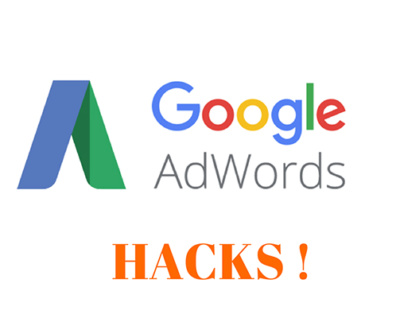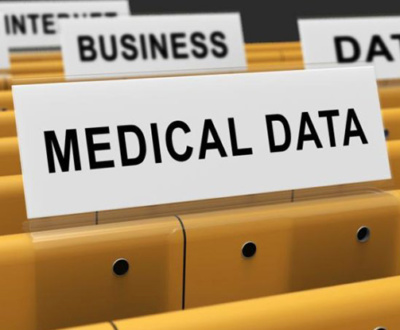Benefits of Facebook Audience Segmentation for Targeting Potential Customers
- January 12, 2023
- Digital Marketing
The Rise of Online Advertising As A Precursor To Social Media Advertising
Before social media, most audience segmentation was based on commercial market research and a bit of guesswork. However, those efforts were focused on only one thing – to sell as many products and services as possible. When online advertising entered the picture, it brought several game changers with it, which effectively revolutionized the marketing and advertising industry.
With access to hoards of online traffic, marketing teams found their work cut out for them. Rather than determining what the crowd wanted, they focused on giving their brands more exposure. How? By showing how their products and services served specific problems their target customers were facing.
This trend started back in the ‘90s when users started using the internet for personal reasons. It wasn’t long before advertisers jumped on to reach customers there. After 2005, the solution they came up with was to create and distribute user-generated content. The reason why was simple. Most consumers trust other consumers than they trust brands hence the rise of user-generated content.
Once social media platforms, such as Facebook, entered the picture, the tables turned but in a mutually beneficial way. Today’s advertisers can not only determine who their customers are, they can also find out what they like to eat, drink, their shopping preferences and even where they live! In other words, they can determine what target customers would think about and what they like before they even make a purchasing decision.
So we can say that social media has effectively bridged the gap between brands and customers on an intimate level. Not only can you interact with your target audience, you can use the insights you get to customize content to match their current interests and needs.
This is why many online marketers or digital marketing consultants are turning to Facebook Audience Insights to improve their targeting. To understand the benefits you can get from this tool, you need to understand how it works first:
What is Facebook Audience Insights?
The Facebook Audience Insights tool is a robust solution for any customer segmentation strategy you wish to use to drive your online marketing campaign. Besides eliminating most of the guesswork from initial targeting efforts, it also offers better CPC, CPA and a higher and accurate ROI. That’s because using Audience Insights you can access data such as the following:
- Number of Facebook page likes – the pages they like in different categories.
- Demographics – This does not just include common ones such as age and gender. Using the tool, you can also find out a user’s education and relationship status and how many members they have in their family.
- Location and language – Where target users live and the language they speak.
- Social media usage – How long users use Facebook daily and which devices are they using to log on.
- Purchase preferences – Items they bought in the past and how they purchased them (via a tablet, their phone, a desktop, etc.).
The tool allows you to access data for people who follow and like your brand page as well as others on Facebook who can be convinced to do the same.

Using Audience Insights
Audience Insights is available in the Facebook Ad Manager under the ‘Tools’ tab. It will allow you to define your ‘seed’ audience according to the aforementioned demographics. This is what makes this tool a great resource for anyone who wants to test new content or who wants to tap into topics and trends their target customers may be interested in.
To define your seed audience, you can pick and choose which audience you want to take a closer look at. As mentioned before, this can include people who like your page, others on Facebook and an audience you customized yourself.
Needless to say, you should choose options that meet the demands of the campaign you are running. For instance, if you want to increase conversions on your Facebook page, you should target users who are connected with it. Similarly, if you want to expand your email list, you can create a custom audience to capitalize on it.
You can refine your audience further by choosing parameters, such as gender, location and age range. The fact is that the more data points you use to refine your audience, the smaller it will become and that is a good thing. You can actually save money by reducing the size of your ads if you know exactly who you are targeting and when you should do it.
Facebook Audience Segmentation basically allows you to stalk your target consumer without being creepy about it. It does so in great detail because of the sheer number of data points it offers. Here is a fantastic blog, which goes into detail about the tool.
The benefits of Behavioral Targeting
Facebook Audience Segmentation basically allows marketers to target the behavior of potential customers down to the very basics. Some of the benefits you can get from this intimate targeting solution include the following:
Higher CTR – The more relevant your ads are, the higher their chances of being clicked, which can lead to a higher CTR (click-through-rate).
Better Engagement – Users are more likely to share an ad they can relate to with others than one that has nothing to do with their interests. If successful, this can give your brand some free advertising.
Better ROI – By eliminating people who have no interest in your brand and its offerings, you can delegate marketing funds to segments that have higher chances of converting.

Audience Categories That Can Help You Enhance Targeting Efforts
Besides narrowing down behavioral demographics, you can also use the tool to improve your targeting strategy by choosing certain groups, such as the following:
Users who have used FB Payments – This will give you an audience who are more likely to buy products online. The strategy is ideal for B2C companies and especially startups that are selling solely through Facebook
Event personnel – This group comprises people who are responsible for managing corporate and personal events. You can score in more than one way if you target these users – besides getting access to users who may be interested in your products, you can also ask them for their services.
Page Admins – These include people who create new Facebook pages and not necessarily for their company. They can be freelancers, small business owners and bloggers. By targeting them you will basically be targeting their target customers as well.
Early And Late Tech Adopters – Early tech adopters, are always on the lookout for new products that they can review or promote on their social media platforms or blogs. If you are introducing ones they might be interested in, include this demographic in your strategy. On the other hand, if you are promoting a product that is already selling well. You should consider targeting people who have never heard of your brand. Think of it as bait to lure bigger fish into your marketing net(work).
Benefit from Mobile User Segments
There is a reason why the Facebook app has over 2.45 billion users as of 2019. Most use the app to browse but they also use it to look up recommendations for products and services they are interested in. This presents a terrific opportunity for online marketers when it comes to reaching users where they make said purchases. Here are some ways you can take advantage of mobile user categories in your audience segmentation campaign:
Target Mobile Devices By Brand – Determine which smartphone devices your potential buyers or buyer persona would use. For example, if your products and services are expensive, chances are high that your potential customers use equally expensive devices such as the iPhone or any Apple product for that matter.
Target Mobile Devices by OS – If you are selling an app or an online tool, which works better on certain operating systems than it does on others, take out other OS out of the equation.
Consider Geographic Market Segmentation
As is apparent from the name, geographic market segmentation includes a market segment that is based on country, region, neighborhood, zip code and other characteristics that can help you pinpoint where your target customer resides and shops from. In Facebook, you can target customers geographically by:
- Selecting regions, states, cities and DMAs.
- By drawing a radius on Google Maps (1 to 50 miles).
- By using lookalike audiences to reach people who may be interested in what you are selling.
Drive Your Target Audience Towards Conversion
Focusing on your customers’ journey is key when it comes to increasing conversions on Facebook. The reason is quite simple. Every user has a different purchase intent. For example, someone who is new to your Facebook page will be at a different conversion stage than those who have visited and engaged with it several times.
In other words, some users will have to be coaxed into consuming more content before they can be convinced to buy anything:
Early Stage – This is the point in which potential customers are learning about your brand. At this stage, your aim should be to increase engagement to encourage interactions with the page. You can do that by publishing content that is engaging on your platform, such as a video tutorial explaining how your products are used, still images showing your products or services in the best light etc.
Mid Stage – During this stage, your aim should be on gathering more information about your audience and finding out what they find relevant. To do this, you should leverage links and promote campaigns that will allow you to determine who clicked on your content and when. The data will improve your retargeting efforts.
Late Stage – This is the point where customers are ready to buy what you are selling. At this stage, you should collect data that can allow you to serve content that they will be interested in and find relevant. It should be powerful enough to convince them to make a purchase. Use strong CTAs, coupons and sale incentives at this point to trigger a sale.
While retargeting happens during the mid stage, you would be surprised at how many people fail to take advantage of it. It can make or break your customers’ journey because the data you get will allow you to tweak your existing ad campaigns and make them more attractive. This is more cost- efficient than creating new ads that are based on older data and will give you the same results as last time.
You can retarget using Facebook Pixel. This is small HTML code that will allow you to track users who visited your website or page. By doing that, you can separate your Facebook audiences from those who engaged with specific topics or campaigns.
For example, if you publish a link to a product page on Facebook, you can retarget users just by adding Facebook Pixel to its URL.
The bottom line is that you can increase conversions and make your Facebook page more engaging just by getting to know your audiences on an intimate level. By exploring their likes, dislikes, location, gender preferences and even what type of products they wish your brand would sell, you can improve your ROI tenfold.
Are you interested on how paid media strategies could boost your bussiness? Do you really have the time and experience to go through all of that data? This is where a digital marketing company can help. Get in touch with us today at click here to find out how.
Subscribe to our newsletter!
Request a free quote
We offer professional SEO services that help websites increase their organic search score drastically in order to compete for the highest rankings even when it comes to highly competitive keywords.






